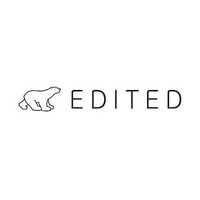Saving Products Project
At Edited we created a new feature called Boards where users can save multiple items within the app to a board so they can arrange and view them quickly later on and perform analysis and get insights. In the platform we already had a way of saving products, but we found from speaking to users, looking on Fullstory and at Mixpanel data that very few users were saving products as it was undiscoverable and the user experience was not intuitive. The problem we needed to solve was to make saving products more intuitive and discoverable, but we also needed a global way where users could save multiple different items such as charts, images, articles and products from different parts of the app which we didn’t have. In order to save products in the app users used to have to click on the “My Clipboard” tab in the top right to open a drawer then click products to add to the clipboard and then save them to a new board. We found this was not intuitive and users didn’t know what the clipboard was and there were a lot of other usability issues we needed to address like three clicks to save an item, and problems saving to multiple boards.
Saving Products Currently
- Save button to be easily discoverable
- Save a product with few clicks
- To be able to save products to existing boards
- Ability to create a new board and save to it
- The first time a user saves an item
- One click save
- Saving to a new board

